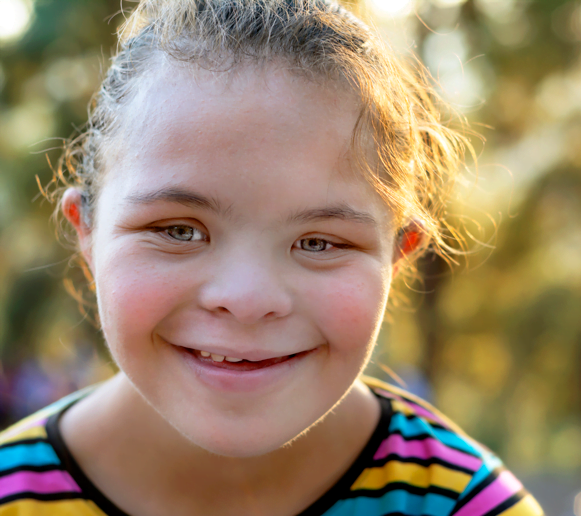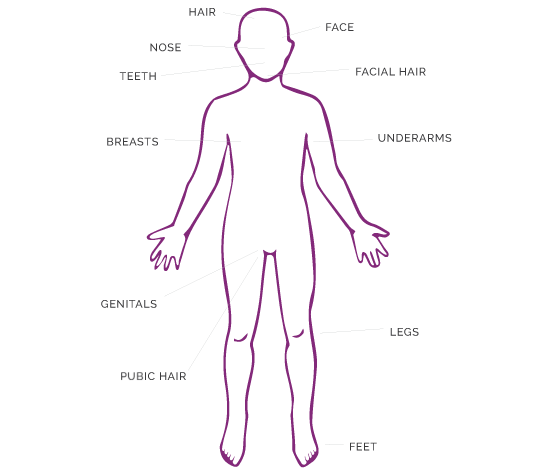Hygiene
Puberty changes bring new challenges for all children and youth. They may notice that overnight they have oily hair, smell bad, and start getting pimples.
Hygiene is important for health (e.g., teeth cleaning to prevent cavities and gum disease) but also for social reasons such as smelling and looking good. Good hygiene and self-care is considered a positive social quality and can help us feel good about ourselves.

Children and youth with disabilities may need extra support to follow hygiene rules and routines. They may struggle reading social cues and knowing when to fix a hygiene issue such as smelly breath. Also, if a youth has a physical disability they may need extra help with personal care.
Although parents are likely the main educators when it comes to hygiene and self-care, service providers can make a difference when they reinforce the messages given by parents. Service providers are in a unique position to support both parents and children/youth through the process of puberty. Consistent messages from both parents and service providers can make great impact when it comes to the management of hygiene and self-care.
Managing Hygiene and Self-Care
Parents and service providers can work with children and youth to teach them how to take care of their body during puberty. It’s helpful for them to hear the same messages from different people. Here are some key tips for self-care as they relate to different parts of the body.
Hygiene Routine Chart
Using a hygiene routine chart can help your youth stay on track and make healthy habits.
Make a chart (like the one below) that shows the tasks. Put them in the order that works best for your family. Some families find the morning too busy for bathing, so showers are taken in the evening. Use pictures or photos as visual reminders of what comes next and check them off as they are completed.
Managing menstruation
Girls may begin to have periods as early as 8 years old, up until age 16. Managing menstruation can be difficult for girls with a disability and they may have fears about how to cope, whether or not it will hurt, and who to talk to.
Here are some practical tips for parents and service providers to support youth through the process.
- Talk about having a period as a normal and healthy part of growing up.
- Explain why females have periods: “your body is getting ready to change into a woman.”
- Use simple language: “the blood flows out of your vagina, the opening between your legs. It is similar to the blood when you cut your finger or have a nose bleed.”
- Show what to do including where to find the pads, how to use them, and dispose of them in the garbage. Practice with lots of different products and give choices about the type of pads.
- Explain what to do if blood gets on underwear or pants. For example, “keep back up underwear or clothes in your backpack just in case you get blood on your underwear or pants.”
- Talk about fears and concerns. Mention that different types of emotions (e.g., sadness or moodiness) are normal. Talk about feelings and discuss coping strategies (e.g., listening to music, doing some gentle stretching, or getting extra sleep).
- Discuss other practical strategies for managing menstruation, for example, “don’t wear white clothing when your period is due as this can lead to embarrassment if bleeding starts.”
Self-Care and Sexual Health beyond puberty
As youth get older they may move from the care of a pediatrician to a family doctor. Regular check-ups and screening are important as they transition into adulthood.
- Healthcare providers may perform a pelvic exam to examine a female’s reproductive organs. To learn more about having a first pelvic exam, see SexualityAndU.ca.
- A Pap test checks for changes in the cells of the cervix. If any cell changes are found, they should be followed closely. If needed, cell changes can be treated so that cancer does not develop. Current guidelines recommend a Pap test for females who are 25 years of age or 3 years after first sexual activity, whichever is LATER.
- All breasts have a certain amount of ‘lumpiness’ so people should know what feels normal for them and if something does not feel right, talk to a healthcare provider. A clinical breast exam performed by a healthcare provider can help detect changes early.



